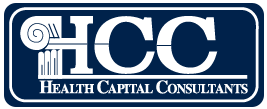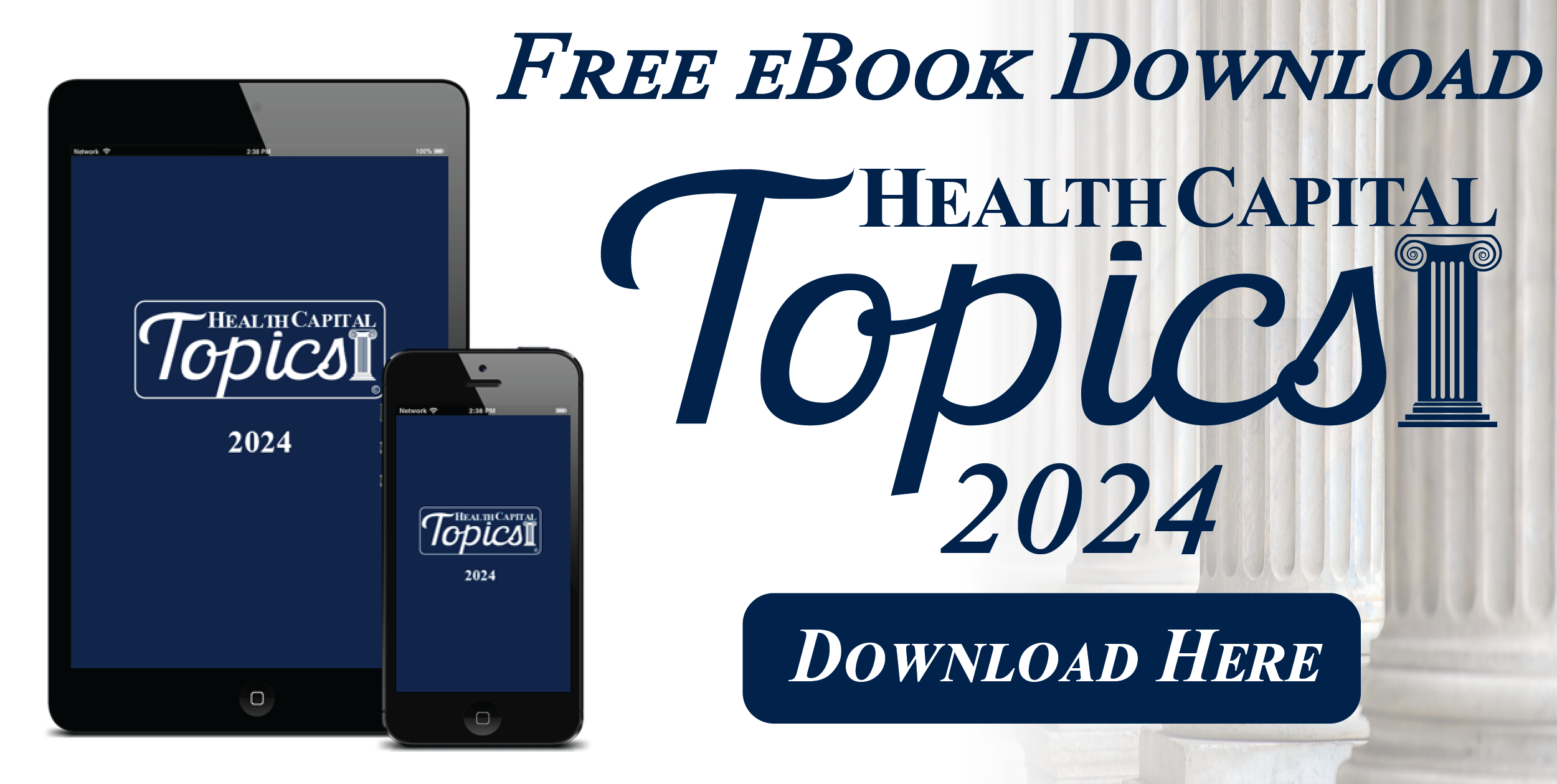Demand for a variety of healthcare services, including cardiovascular services, is likely to increase significantly in the near future, primarily as a result of the increasing proportion of Americans over the age of 65. As noted in the first installment in this series, cardiovascular disease (CVD) is the leading cause of death in the U.S., rendering cardiovascular services in particularly high demand. However, at the same time that need for these services is increasing, the supply of these services, measured by the number of actively practicing physicians in cardiac specialties, is decreasing, leading to a potential tipping point in the foreseeable future. This second installment in a five-part series on the valuation of cardiovascular services reviews the competitive environment in which these providers operate.
Demand for Cardiovascular Services
Demand for cardiovascular services is likely to increase in the near future, primarily as a result of changing demographic and regulatory trends in the U.S. Population growth, most notably growth in the U.S. aging population, is increasing demand for a variety of cardiovascular services, as the prevalence of CVD is growing.1 In addition to demand generated by population growth and aging, the incidence and prevalence of many of the risk factors for CVD are also increasing, which means that not only will more elderly people require cardiovascular surgical procedures, but younger, less healthy adults may also require earlier cardiovascular interventions.
As noted above, CVD is the leading cause of death in the U.S., accounting for approximately one out of every five deaths.2 Approximately 127.9 million adults in the U.S. (48.6% of the population) have at least one form of CVD.3 It is estimated that the average annual direct and indirect costs of CVD in the U.S. totaled $422.3 billion from 2019 to 2020.4 By 2050, costs associated with CVD are expected to be in the trillions, with the total cost across all conditions expected to triple for those age 80 and older, and double for those between the ages of 20 and 44.5
The significant prevalence of CVD among adults over age 60 reflects one of the biggest non-modifiable risk factors for CVD – increasing age.6 Equally important perhaps are social determinants of health; these modifiable risk factors account for 80% of cardiovascular health outcomes.7 A study published in the Journal of Gerontology cited evidence that multi-morbidity is increasing in the age groups that are just beginning to enter the older stages of adulthood.8 With the number of U.S. adults age 65+ projected to grow more than 50% by 2050, the increase in multi-morbidities will place a strain on the healthcare system.9 With this increase in multi-morbidities in older age groups, it is likely that the demand for healthcare services, including for cardiovascular surgery, will likely increase as well. However, population cohorts other than the elderly are also responsible for the increased utilization of cardiovascular surgical services, as leading risk factors for CVD include tobacco smoking, diet, physical activity, and high weight.10
Smoking increases the risk of developing CVD by: (1) increasing blood pressure; (2) narrowing and stiffening the arteries due to the buildup of plaque; (3) thickening blood, making clotting more likely; and (4) depriving the blood stream of essential oxygen.11 Studies have shown that smoking increases the risk of CVD and all its subtypes, with risk doubling for acute myocardial infarctions (AMI), heart failure, and cerebrovascular disease.12 Further, smoking negatively affects physical endurance, reducing overall physical fitness; smokers also can have poor physical performance and increased risk of injuries.13
Obesity (i.e., body mass index over 30.0) increases the risk of developing CVD by: (1) increasing blood pressure and (2) increasing blood cholesterol, which may lead to increased plaque buildup in the circulatory system.14 The U.S. obesity prevalence from 2017 through March 2020 was 41.9%, and the estimated annual medical cost of obesity is $173 billion.15 By 2030, estimates suggest that nearly half of all American adults will be obese, and nearly 1 in 4 will be severely obese;16 by 2050, approximately 20% of children, 33% of adolescents, and 66% of adults, are expected to be obese.17
Supply of Cardiovascular Services
According to data from the Association of American Medical Colleges (AAMC), in 2023 there were 22,843 active physicians specializing in CVD, 4,693 specializing in thoracic surgery, and 4,464 in vascular surgery.18 Approximately 70% of these providers are employed by hospitals or health systems, and less than 20% are employed by an independent practice.19 Cardiac specialists tend to be older than other specialists; as of 2023, 38.2% of CVD physicians, 33.5% of thoracic surgeons, and 20.3% of vascular surgeons were age 65+.20 Among all physicians, approximately 23.4% are age 65+.21 According to an AAMC physician workforce analysis, physicians typically retire around age 67.22 Further, the hours worked per week remained consistent for men (specifically) through age 59, but started to decrease beyond age 60.23 This progressive decline in physician productivity associated with aging indicates that the supply of cardiovascular providers will be restricted not only by the decline in the absolute number of surgeons, but also by the reduction in services offered by the aging CVD physician workforce. Even though cardiologists tend to work longer than other specialists,24 these figures still indicate that the cardiovascular workforce will be significantly reduced in the next few years, and even more will likely reduce their hours work, further reducing the cardiovascular workforce.
Compounding the workforce reductions brought on by retirement (and reduced working hours leading up to retirement) is that fewer cardiovascular providers are entering the workforce than are leaving it,25 resulting in a declining supply of cardiovascular providers even while demand for their services is increasing.
Conclusion
The market for cardiovascular services is expected to experience increasing demand in the coming years, due to an aging U.S. population and the growing prevalence of risk factors for cardiac conditions. As demand increases, the supply of cardiovascular providers is anticipated to simultaneously decrease, as the population of physicians continue to move toward retirement while the number of residents entering these fields remains insufficient to replace older physicians. Despite growing demand, cardiovascular providers may face challenges in the reimbursement for their services, where stagnating Medicare reimbursement rates may serve as one of the most significant challenges currently faced by these specialists. The third installment in this series will review the reimbursement environment in which cardiovascular providers operate.
“Cardiologist demand is on the rise—can hospitals keep up?” By Michael Walter, Cardiovascular Business, November 14, 2024, https://cardiovascularbusiness.com/topics/patient-care/care-delivery/cardiologist-demand-rise-can-hospitals-keep (Accessed 1/9/25).
“Heart Disease Facts” Centers for Disease Control and Prevention, https://www.cdc.gov/heart-disease/data-research/facts-stats/?CDC_AAref_Val=https://www.cdc.gov/heartdisease/facts.htm (Accessed 1/9/25).
“2024 Heart Disease and Stroke Statistics Update Fact Sheet: At-a-Glance” American Heart Association, available at: chrome-extension://efaidnbmnnnibpcajpcglclefindmkaj/https://www.heart.org/-/media/PHD-Files-2/Science-News/2/2024-Heart-and-Stroke-Stat-Update/2024-Statistics-At-A-Glance-final_2024.pdf (Accessed 1/9/25).
“Forecasting the Economic Burden of Cardiovascular Disease and Stroke in the United States Through 2050: A Presidential Advisory From the American Heart Association” By Dhruv S. Kazi, MD, MSc, MS, FAHA, et al., Circulation, Vol. 150, No. 4 (June 2024), https://www.ahajournals.org/doi/10.1161/CIR.0000000000001258#:~:text=Among%20those%2020%20to%2044%20years%20of,reflecting%20the%20overall%20aging%20of%20the%20population. (Accessed 1/9/25).
“Age is the Biggest Risk for Heart Disease, But Lifestyle and Meds Have Impact” Duke Health, Updated October 2, 2019, https://corporate.dukehealth.org/news/age-biggest-risk-heart-disease-lifestyle-and-meds-have-impact#:~:text=DURHAM%2C%20N.C.%20%E2%80%93%20Of%20all%20the,model%20performance%2C%E2%80%9D%20Pencina%20said. (Accessed 1/9/25).
“Workforce in Crisis: Charting the Path Forward” American College of Cardiology, Cardiology Magazine, June 2, 2023, https://www.acc.org/Latest-in-Cardiology/Articles/2023/06/01/01/42/Cover-Story-Workforce-in-Crisis-Charting-the-Path-Forward (Accessed 1/21/25).
“Cohort Trends in the Burden of Multiple Chronic Conditions Among Aging U.S. Adults” By Nicholas Bishop et al., Journal of Gerontology, Vol. 77, Issue 10, 2022, https://academic.oup.com/psychsocgerontology/article/77/10/1867/6591182?login=false (Accessed 1/9/25).
“Heart Disease and Stroke Statistics – 2023 Update: A Report from the American Heart Association” By Connie W. Tsao et al., Circulation, Vol. 147, No. 8 (2023), https://www.ahajournals.org/doi/10.1161/CIR.0000000000001123 (Accessed 1/9/25).
“How is Smoking Linked to Heart Disease and Other Heart Issues” By Kirsten Nunez and Payal Kohli, Healthline, October 20, 2021, https://www.healthline.com/health/smoking/how-does-smoking-affect-your-heart (Accessed 1/9/25).
“Tobacco smoking and risk of 36 cardiovascular disease subtypes: fatal and non-fatal outcomes in a large prospective Australian study” By Emily Banks et al., BMC Medicine, July 3, 2019, https://bmcmedicine.biomedcentral.com/articles/10.1186/s12916-019-1351-4 (Accessed 1/9/25).
“Smoking and Physical Activity” Cleveland Clinic, July 27, 2021, https://my.clevelandclinic.org/health/articles/10643-smoking-and-physical-activity (Accessed 1/9/25).
“Health Effects of Overweight and Obesity” Centers for Disease Control and Prevention, September 24, 2022, https://www.cdc.gov/healthy-weight-growth/food-activity/overweight-obesity-impacts-health.html?CDC_AAref_Val=https://www.cdc.gov/healthyweight/effects/ (Accessed 1/9/25).
“Adult Obesity Facts” Centers for Disease Control and Prevention, May 17, 2022, https://www.cdc.gov/obesity/adult-obesity-facts/index.html (Accessed 1/9/25).
“By 2030, nearly half of all U.S. adults will be obese, experts predict” By Melissa Healy, Los Angeles Times, December 18, 2019, https://www.latimes.com/science/story/2019-12-18/nearly-half-of-us-adults-will-be-obese-by-2030 (Accessed 1/21/25).
“The Lancet: Without immediate action nearly 260 million people in the USA predicted to have overweight or obesity by 2050” University of Washington, November 14, 2024, https://www.healthdata.org/news-events/newsroom/news-releases/lancet-without-immediate-action-nearly-260-million-people-usa#:~:text=With%20the%20prevalence%20of%20obesity,be%20concentrated%20in%20southern%20states. (Accessed 1/21/25).
“Total Physicians by Specialty: United States and its Territories, 2023” Association of American Medical Colleges, https://www.aamc.org/data-reports/report/us-physician-workforce-data-dashboard (Accessed 1/21/25).
“Has Employment of Cardiologists Been a Successful Strategy? – Part 1” American College of Cardiology, November 6, 2019, https://www.acc.org/Membership/Sections-and-Councils/Cardiovascular-Management-Section/Section-Updates/2019/11/06/09/49/Has-Employment-of-Cardiologists-Been-a-Successful-Strategy-Part-1#:~:text=Today%2C%20analyses%20by%20a%20number%20of%20organizations,are%20employed%20by%20hospitals%20or%20health%20systems.&text=The%20result%20is%20that%20an%20estimated%2020,Professional%20Service%20Agreements%20or%20other%20contractual%20models. (Accessed 1/21/25).
“U.S. Physician Workforce Data Dashboard” Association of American Medical Colleges, https://www.aamc.org/data-reports/report/us-physician-workforce-data-dashboard (Accessed 1/21/25).
“The Complexities of Physician Supply and Demand: Projections from 2015 to 2030” By Tim Dall et al., IHS Inc., Report for Association of American Medical Colleges, February 2017, available at: https://www.researchgate.net/publication/315156643_The_2017_Update_Complexities_of_Physician_Supply_and_Demand_Projections_from_2015_to_2030/link/58cbf570a6fdcca17870a691/download?_tp=eyJjb250ZXh0Ijp7ImZpcnN0UGFnZSI6InB1YmxpY2F0aW9uIiwicGFnZSI6InB1YmxpY2F0aW9uIn19 (Accessed 1/9/25), p. 47.
“Which Physician Specialties Retire Early?” By Justin Nabity, Physicians Thrive, November 27, 2024, https://physiciansthrive.com/retirement-planning/specialty-retirement/ (Accessed 1/21/25).
See, e.g., “Workforce in Crisis: Charting the Path Forward” American College of Cardiology, Cardiology Magazine, June 2, 2023, https://www.acc.org/Latest-in-Cardiology/Articles/2023/06/01/01/42/Cover-Story-Workforce-in-Crisis-Charting-the-Path-Forward (Accessed 1/21/25)





